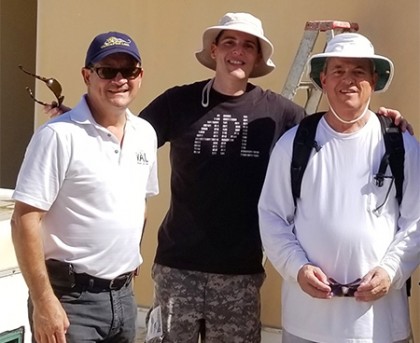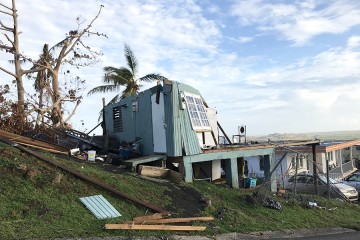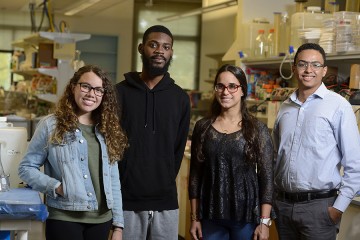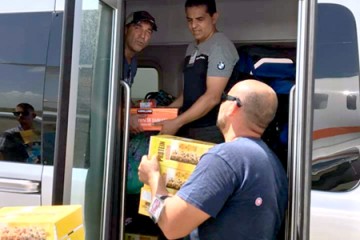Naim Merheb, a satellite communication systems engineer at the Johns Hopkins University Applied Physics Laboratory, recently led a volunteer effort to reconnect several Puerto Rican communities to the internet in the wake of Hurricane Maria. Merheb even helped restore 911 dispatch for ambulances in one rural area.
When the category 5 storm slammed into Puerto Rico on Sept. 20, it devastated the island and cut off communications to most areas. When Merheb, a native of Puerto Rico, heard from family and friends about the storm damage, he knew it would have a continuing impact on residents who would have to rebuild an economy with no infrastructure.
A graduate of Polytechnic University of Puerto Rico and the Johns Hopkins Engineering for Professionals program, Merheb has worked at APL since 1999 and specializes in communication and network systems, particularly those relying on satellites. He contacted several satellite communication companies with a proposal to establish hot spots for wireless internet access in hard-hit and hard-to-reach communities.
"We all saw on television how folks were pulling over along the highways, having driven miles to find a small spot with a cellphone signal. So I wanted to try to take the signal to them instead," Merheb said. "I was looking at how I could apply my professional knowledge to contribute in some capacity."
One company agreed to provide him with the equipment, service, and support that he requested. With the help of family and friends, several other collaborating organizations and APL colleagues—including other members of APL's Hispanic Employee Resource Group—he began establishing free internet hot spots in areas that had been cut off from communications.
From Nov. 11–22, Merheb and his collaborators set up free internet in eight municipalities: Comerío, Culebra, Luquillo, Morovis, Orocovis, Utuado, Vieques, and Yabucoa. He said that the group could only address about one site per day, since many communities are still difficult to reach due to poor road conditions.

Image caption: Last month, Johns Hopkins APL’s Naim Merheb (center) and his collaborators set up free internet in eight Puerto Rican municipalities after Hurricane Maria destroyed much of the island’s infrastructure.
Image credit: Naim Merheb
A few days after Merheb returned home from Puerto Rico, the Federal Communications Commission issued a report on the reestablishment of cellphone connectivity throughout the storm-ravaged island. Of the top five towns on the FCC's list of areas most in need, Merheb's team had restored communications to four.
Yabucoa, the southeastern municipality where Maria made landfall in Puerto Rico, was fourth on that list—with Culebra and Vieques right above. The municipality's 911 dispatch for ambulances had been down for almost 60 days, and without it, the hospital could only help patients who were able to drive themselves or had arranged for a ride.
"I happened to install the terminal at the community hospital where the 911 system was co-located because it was one of the few places in the region with reliable generator power," Merheb said. "So I went ahead and took a few hours to help reverse-engineer their building's wiring to hook them back up. The next day, the point of contact there informed me that the Yabucoa municipal hospital had been able to dispatch ambulances to more remote communities for the first time since Hurricane Maria tore through."
While proud of his team's work, Merheb said a considerable amount of work remains—especially in the most remote areas.
"The situation gets increasingly worse the farther you get from the San Juan metro area," he said. "I suspect that many folks will still be without power well into the spring of 2018. Can you imagine living without electricity in the United States in the 21st century for six months?"
Posted in University News
Tagged hurricanes, puerto rico











